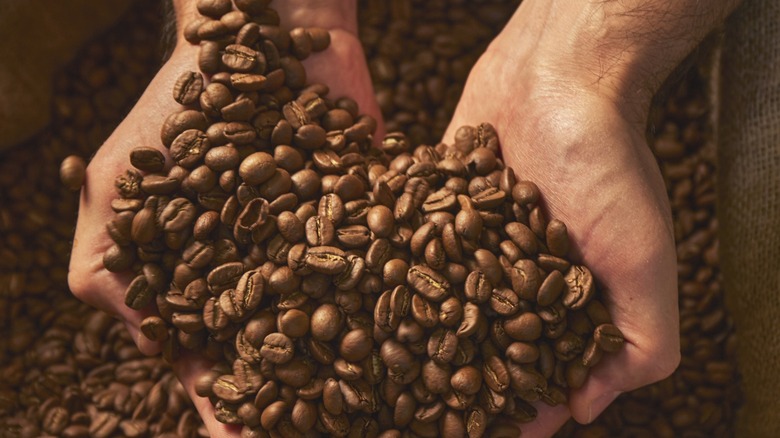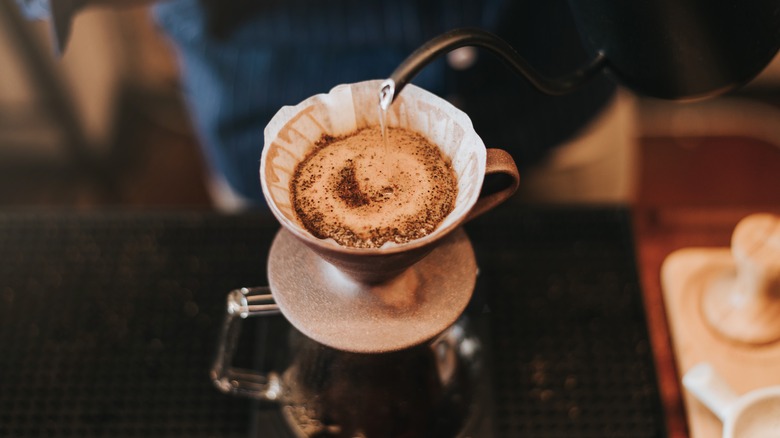The Reason Dark And Light Roast Coffees Bloom Differently
The word "bloom" conjures images of daffodils unfolding in the spring or cherry blossoms heralding the return of juicy Bings, Raniers, and Montmorency morsels. But inside your coffee cup, the concept of "blooming" requires more than an act of Mother Nature. It's a process for gently coaxing the most flavor and freshness from roasted coffee beans using a mix of science, knowledge, and human intervention. Many factors come into play when blooming a perfect pot of coffee, including how those beans were roasted.
Blooming a pot of coffee means using a small amount of boiling-hot water to "pre-infuse" ground coffee beans before a full brew, especially when using pour-over or French press methods. Steeping for 30 to 45 seconds releases carbon dioxide that occurs during the roasting process, which can leave a bitter or sour taste if not removed. You'll see the CO2 gasses escaping through bubbles and foam on the water's surface.
After that "de-gassing" happens, the beans are free to fully absorb all the rich coffee-bean flavor during the entire brewing session. But blooming occurs differently in dark roasted coffee beans than in light roasted ones. It involves bean density and carbon dioxide levels, affecting the flavor and aroma of your cherished morning or afternoon java.
The amount of high heat and hot water affects your coffee's bloom
Carbon dioxide takes center stage in coffee blooming, so it makes sense that coffee beans with higher CO2 concentrations draw more attention when de-gassing occurs. Dark roasted beans harbor considerably more carbon dioxide than lighter roasts due to extra time spent in the roaster. With all that high heat and prolonged exposure, dark roasted beans become puffy and brittle, making it easier for hot water to penetrate. This creates a more robust bloom with higher effervescence, a stronger bubble release, heightened aroma, and the potential for more flavor and better texture in the final brew.
On the other hand, light roast coffee beans spend less time in the roaster and tend to have harder, denser exteriors that inhibit the release of carbon dioxide. Blooming occurs when covering them with that initial small amount of hot water, but the release is generally less. You may need to agitate the beans during the bloom slightly.
To bloom your beans at home, grind them fresh and place them inside the brewing vessel. Add boiling water in a ratio of 2:1 beans to liquid, and let it steep for up to 45 seconds. If you're getting a weak bloom, it could be because the beans aren't fresh enough since oxidation typically occurs within two weeks after roasting. Use freshly roasted beans, make sure the water is boiling hot, and experiment with light, medium, and dark roasts to unleash the right level of goodness in your cup.

